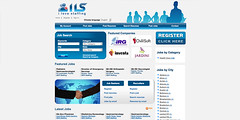In order to produce appealing websites that work properly, it important to have a solid understanding of standard website development principles. Many resources are available to get started, including this article. Keep reading for a selection of website design tips and tricks.
Use a basic, simple layout for your website so it’s easy to change and expand. This allows you to get comfortable with the general processes of web design in an easy-to-understand environment; you can always move on to more complex layouts as you gain experience.
When you are choosing a website hosting service, you want to see exactly what is included in their offer. Things you should be aware of are CPU usage, bandwidth and disk space, among others. Be certain that you are aware of what you are paying for.
Photoshop is a very effective and helpful tool when it comes to web page design. Dreamweaver is another option that should be considered when making a choice.
Getting help in designing your website isn’t a failure. Content creation, web programming, user interface design, graphic design, and search engine optimization are just a few of the specialized sub-skills that can contribute to great web design. You shouldn’t be ashamed to find help when it’s needed. You can hire a company or pro that specializes in any area you’re not well-versed with.
Make sure your slogan is on every page of your website, including those that are housed in subdomains. These taglines should be in text that is large and bold so that they are the first thing a viewer will notice when he or she follows your links. This tagline let’s people know what the page is about and whether or not they should stay there or not.
If you can, you should include “site searching” on your home page, as well as any other pages. This is vital to maximizing the usability of your site, and helping your vistors find what they need. It is very easy to include this option on your website, and visitors will undoubtedly appreciate your effort.
As you design your website, be sure that someone other than yourself is helping you check its functionality as you go. Have someone test each new feature that you add. Perhaps you think the loading speed of a video is fine, or that the colors are harmonious, but someone else might tell you otherwise. Always seek out different, outside opinions.
Captchas are useful for preventing automated registration, but should be used sparingly. The captcha makes visitors do too much work. Only the most dedicated and interested visitors will continue through an unnecessary captchas; many will simply abandon the page.
As was stated in the previous article, web designers need to learn the basics of website creation to create websites that are appealing visually and function properly. It can be hard to figure out where to begin when there is so much information available. You can get a head start by utilizing the insights given here.
Don’t assume that the design process has wrapped up just because the site is live. You should strive to stay involved with your website’s design. Updating doesn’t need to be daily, but you must find a regular schedule and follow through consistently. If your website focuses on current events, frequent updates are an absolute must. Current is the key word here! Updating your website isn’t as quick and simple as updating your blog. It’s going to take some hard work and attention to detail.

 Follow
Follow